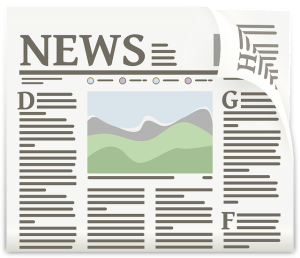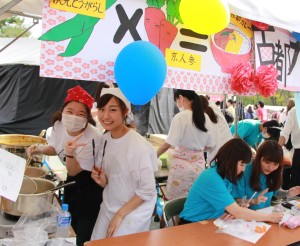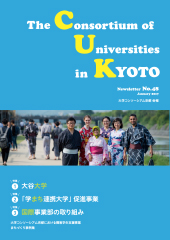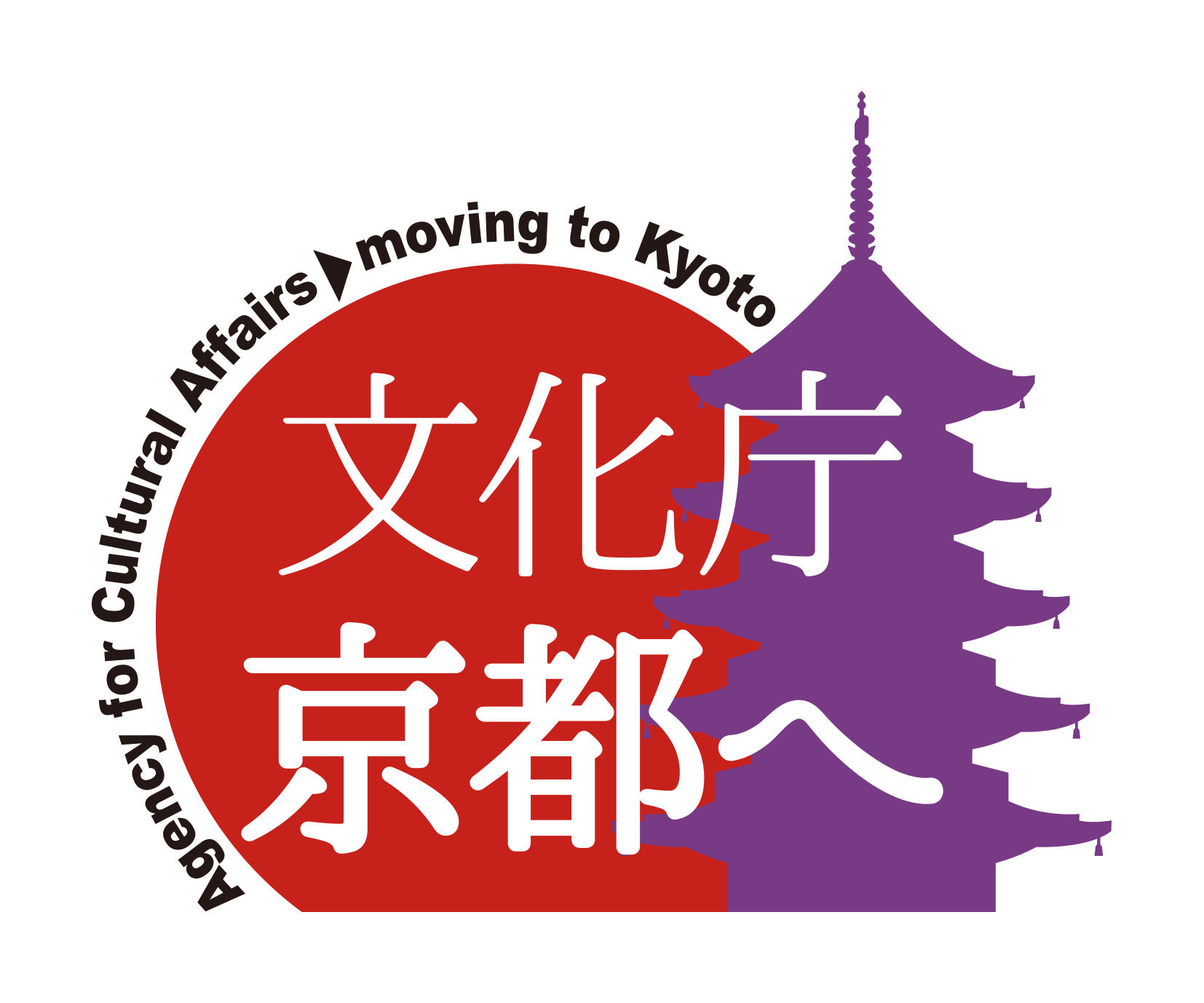The New York Times interviewed the mayor of Kyoto about Kyoto’s international student policy, and we would like to report that the credit transfer system of the University Consortium Kyoto has been published.

The New York Times, June 29, 2014[Click here for details]
(Japanese translation)
“Attracting International Students through Kyoto’s Diverse Attractions” Miki Tanigawa
Growing up in Kuala Lumpur, the capital of Malaysia, Leonie Lim was obsessed with Japan pop culture. For unknown reasons, she wanted to live and study in Japan someday.
“When I was seven years old, I asked my father to buy me a Japanese dictionary,” she said, “and I studied Japanese by myself while watching anime and manga.”
By the time she entered university, she had developed a comprehensive interest in Japan’s history, culture, and art. She chose Doshisha University in Kyoto to study Japanese, Japan culture and global culture.
“It’s a place where I feel like I’m close to the core of Japan’s culture and history,” says Lim, 20.
Her choice coincides with the trend of more international students in recent years choosing to study in Kyoto, the ancient capital of Japan and surrounded by historic temples and shrines, traditional performing arts and crafts, and rich culture.
According to an inter-university organization in Kyoto, which compiles statistics, the number of students studying in Kyoto has increased from 5,157 in 2009 to 7,017 (*) last year. * The basis of the figures is being confirmed.
Kyoto’s figures are increasing even as the overall number of international students in Japan has declined from a peak of 141,000 in 2010 to 135,000.
According to the Japan Student Services Organization, Kyoto ranks fourth in Japan as a whole, although it is a relatively small city, after Tokyo, Osaka, and Fukuoka, which attract almost half of international students.
The attraction of Kyoto, according to the students, is the fusion of its geography and Japan’s unique cultural, historical, and educational position.
Despite being a city of 1.47 million people, Kyoto is a tourist destination with old castles and imperial palaces, and is famous for its state-of-the-art manga museum, the concentration of world-class high-tech companies such as Nintendo, Kyocera, and Omron, and the environmental conference held in 1997. Although it is not a well-known university city, there are still more than 50 universities in and around the city, making Kyoto look like a sister city of Boston, with exchanges for more than 50 years.
“Tokyo is a great place to live, but Kyoto is a great place to study,” says Husin Shih, a 25-year-old from Vancouver, Canada.
Located in the Kansai region in the center of Honshu, the largest island in Japan, Kyoto, together with neighboring Osaka and Kobe, constitutes Japan’s second largest economic zone after Tokyo. However, the area is not as extensive as in Tokyo, and it is completed within a limited area.
“Kyoto is both a city and a village,” says 28-year-old Evdosia Kilopoulou, a graduate of the University of Thessaloniki in Greece and a film student at the Kyoto University of Art and Design.
“If you ride your bike for 20 minutes, you’re going to hit a mountain no matter which way you go,” she adds.
Grace Hennahan, an American in her second year at Doshisha, agrees. “Tokyo is too big, and Kyoto is a more manageable city. It’s not too noisy, and it’s not too urban. I really like that there are temples and shrines all over Kyoto, and I don’t have to look for them very hard.”
Kyoto retains the atmosphere of a small town, but there is a rich nightlife in the city center. Many bars and restaurants are crowded into small alleys. The downtown Gion district has been a place of entertainment for the rich and powerful for centuries, and is famous for its traditional teahouses and geisha known as maiko.
A compact town that has been carefully woven has an academic advantage. “It’s too distracting in Tokyo.” Kenji Yanobe, an artist and professor at Kyoto University of Art and Design, says. “In Kyoto, artists have a chance to get more attention, and in Tokyo, there are too many galleries trying to get noticed.”
Tsang Hanyan, a graduate student from China who is mentored by Yanobe, says, “Kyoto’s small size helps us build close collaborations.”
“I was shocked by his work,” he said, “and under the influence of his teacher, he dreams of critiquing Chinese consumerism and materialism in his work.
Daisaku Kadokawa, the mayor of Kyoto and former head of the Kyoto City Board of Education, is strongly promoting the attraction of more international students to Kyoto.
“For more than 1,000 years, we have nurtured and cultivated culture, arts, crafts, manufacturing, and a variety of studies and research,” he Mr./Ms.said.
To this end, Kyoto City provides partial subsidies for health insurance for international students, provides guarantors to facilitate housing security, and provides opportunities for international students to introduce their own culture at school. “International students should feel isolated in a foreign country,” the mayor said. “We will increase the number of international students to 10,000 in 2017.”
One of his major goals is to make Kyoto comparable to Boston. “Boston is a great city where 25 percent of the population is students,” he says. Kyoto is 10%, far behind Boston, but still higher than any other city in Japan.
The university itself is working hard to increase its international presence. Shiro Yamada, vice president of Doshisha University, said that international students pursuing all degrees receive some kind of scholarship. “It’s a burden financially, but it’s very significant in terms of increasing diversity and inspiring other students.”
Kyoto University, which has produced five Nobel Prize winners from its alumni in the past, recently announced that it will be looking for its next president internationally, which is unprecedented for a Japan university.
Kadokawa cited a consortium of universities that provide students with a credit transfer system as one of the city’s strengths as an educational hub, saying, “This will allow students to study at one university while taking unique classes at another.”
Another strength is that he can study a wide range of subjects, from traditional Japan art, architecture, and Buddhism to manga and anime.
Kyoto Seika University and Kyoto University of Art and Design have comprehensive manga courses, while Bukkyo University and Ryukoku University have faculties of Buddhist studies.
Hanazono University also offers courses in Zen and Japan culture, and the mayor said, “That’s where Mr./Ms.’s Western students study.”
more than
























